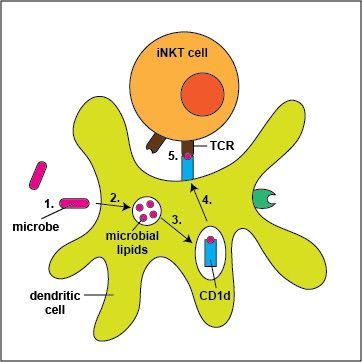Fig. 1: An iNKT-Lymphocyte Recognizing Microbial Glycolipid Antigen Bound to a CD1d Molecule on a Dendritic Cell


1. Antigen-presenting dendritic cells
engulf certain microbes or microbial glycolipids (exogenous glycolipids).
2. The
glycolipids are degrade into epitopes by lysosomes.
3.
The glycolipid epitopes are then bound to CD1d molecules produced in the endoplasmic reticulum by the dendritic cell.
4. The glycolipid epitope/CD1d complexs are transported by the Golgi apparatus to the surface of the dendritic cell.
5. Here the glycolipid epitope can be presented to theTCR
of iNKT cells to induce iNKT cell activation.
Last updated: August, 2019
Please send comments and inquiries to Dr.
Gary Kaiser